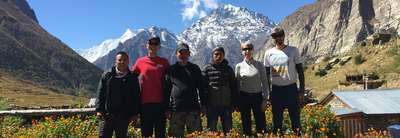The Lost Valley of Nar Phu Trek
Swiss Family Treks Blog Posting
Nar Phu Valley Trek
If the Everest Base Camp and the Annapurna Base Camp feel too mainstream for you, the hidden kingdom of Nar-Phu Valley, also known as The Lost Valley, is where your heart has wanted to go. Located near Mt. Kangguru Himal in the Manang district, this trek explores the Trans-Himalayan regions while also crossing the world’s most challenging Mountain Passes- the Thorong La Pass and the Kang La Pass.
The Nar-Phu Valley is a preserved kingdom, having influences from the Tibetan culture. This trek is one of the small numbers of restricted places in Nepal that require a special permit to travel to. The 1000-year-old architecture, with tall stone lookout towers to look over intruders and heavy wooden doors with sturdy hinges to safeguard the people at night has been preserved till date as they were centuries ago. You will see very little changes that have been made so far.
The Nar-Phu Valley Trek is like sparing a moment to live somewhere that takes you back to an ancient era. The narrow canyons, gorges, high settlement villages and unique biodiversity where snow-leopards are known to be found in the highest concentration in the world, make trekking quite thrilling.
Special Features of the Nar Phu Trek
• Spiritual Tour to Tashi Lakhang Monastery: 'the blessed house of gods', the oldest monastery in Manang.
• Observe the original animal inhabitants of the valley, found rarely anywhere else in the world- such as the Snow Leopard, the Blue Sheep, and Yaks.
• Ancient villages with minimal change over the centuries.
• Trek in the company of massifs like Annapurna II, the Himlung Himal, Gangapurna, and the Tilicho Peak and cross the challenging mountain passes of the Kang-La, the Thorong-La Pass and visit the Tilicho Lake- the highest lake on Earth.
• Experience the Tibetan plateau extending to Nepal and enjoy the Tibetan-derived culture.
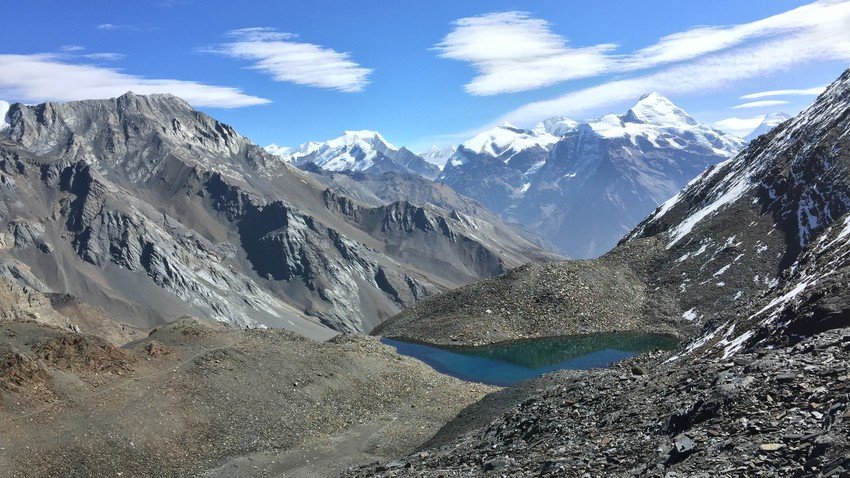 Photo: Kang La Pass in Nar Phu Valley
Photo: Kang La Pass in Nar Phu Valley
The journey of Nar Phu Valley Trek
The route of Nar Phu Valley can be selected based on the amount of time that you have for your vacation. We have mentioned a route with a lesser number of days on this route as well. However, this trek can be made more inclusive with added locations and diverted trekking routes for more adventure. The trek routes also have driving-routes for you to reach the start of your trekking point.
The first day starts with a drive from Kathmandu to Koto through Besishahar, taking you to an altitude of about 2,600m. After you rest the night at Koto, the second day needs you to trek up to Meta, followed by trekking to the hidden village of Phu.
On the third day, you can also hike towards the Himlung Base Camp as it is situated nearby. The resting destination on the 4th and the 5th day shall be the Nar Phedi and the Nar villages.
Likewise, the sixth day allows you to experience the Kang La Pass- one of the challenging passes of the journey which leads you to reach the Ngawal Village. Trekking from Ngawal village on the seventh day towards Pisang would mark the end of your trekking journey. You can drive towards Besishahar and eventually return to Kathmandu.
Although the route in approximation feels like it could be done in a week or so, if we calculate your arrival day in Kathmandu, the trip booking and the documentation process, it takes you up to 10 to 12 days in total.
Nar Phu Trek Combined With Other Treks in the Region:-
Nar Phu Thorong La Pass Trekking
Adding more thrill to your trip, you can divert your trekking route with the Thorong La Pass. This route is less taken by tourists out of the sites of the Annapurna Circuit Trek which recently opened a few years back.
The trek starts from a drive from Kathmandu and Koto via Besishahar, which will be the starting point of the trek. As mentioned earlier, the trek leads towards Meta, Phu Gaun, Nar, Kang La Pass, and Manang. The trek route diverts from Manang towards Yak Kharka and Thorong Phedi at an altitude of 4,600 meters.
The trek then leads towards Muktinath, one of the holiest pilgrim sites in Nepal. The temple can also be reached via Jomsom through the Thorong La Pass; this route takes you towards Muktinath via the Thorong La Mountain Pass, located at an elevation of 3,710 meters. From the pass, you head towards Jomsom and can drive or fly to Pokhara and Kathmandu.
Nar Phu Tilicho Lake Trek
Instead of trekking through the Thorong La Pass, you can also divert the trek towards Tilicho- the world’s highest lake, found at an altitude of 4,920 meters. The trek can be diverted from the sixth day of your trek via the Kang La Pass to Ngawal towards Manang. You can trek towards the Tilicho Lake from Manang. Eventually, you can start heading towards Jomsom through the Meso Kanta Pass and the Kaisang Pass. You can also even visit the holy Muktinath temple. From Jomsom, you can decide whether you wish to fly to Pokhara or drive your way through Marpha where you can walk through the uniquely-built village houses, apple gardens, and brandy breweries until eventually reaching Pokhara and Kathmandu.
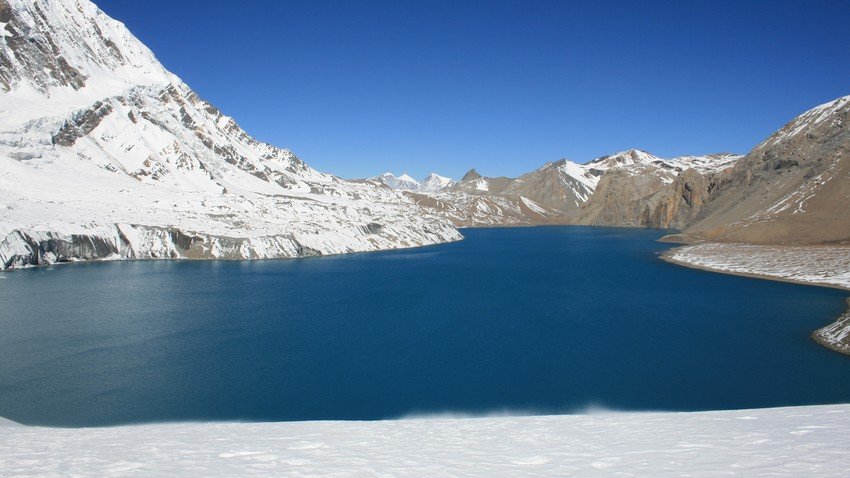 Photo: Tilicho Lake in Manang
Photo: Tilicho Lake in Manang
Best season to do Nar Phu Valley Trek
The Nar Phu Valley lies in the rain shadow zone of the Annapurna and Himlung Peaks. Thus, the trek can be made during the month of monsoon as well, unlike many other famous treks in Nepal where monsoon presents a climatic hindrance. The effects of monsoon would be minimal because of the valley's strategic position.
However, the best seasons would be during spring, which occurs in April and May, as well as during September, October, and November. The temperatures are warm to moderate with monsoon ending eventually. The skies are clear and the views are serene and beautiful everywhere you go.
Permits required for Nar Phu Valley Trek
The Nar Phu Valley Trek comprises of restricted areas which will require you to have two types of trekking permits. You must be a part of a group of at least two trekkers, accompanied by a registered guide. A local company will then arrange your permit to travel to this hidden world of a mysterious land.
Annapurna Conservation Area Project Permit cost: NPR 3,000 Per Person
Nar Phu Valley Restricted Area Permit: USD 100 Per Person/per week (September-November)
USD 75 per person/week (December to August)
You need to have a copy of your passport, ID image and your original passport with the visa stamp. You will need to separate 3-4 hours of your time to get the whole document into the process. The official working hours is 10 am-5 pm from Sunday to Friday. Make sure there are no public holidays.
Average Cost
The average cost rate usually depends on the type of travel agency and the facilities that you choose to have. Normally, international travel agencies will charge you around an extrapolation of USD 3,000-3,200 per person. The local agencies can charge you USD 2500 per person (16 days package) with twin bedrooms and breakfast. The price range, of course, varies concerning the service the agencies themselves. The range provided here is just estimations and an extrapolation. You can choose the agencies and facilities respective to your budget.
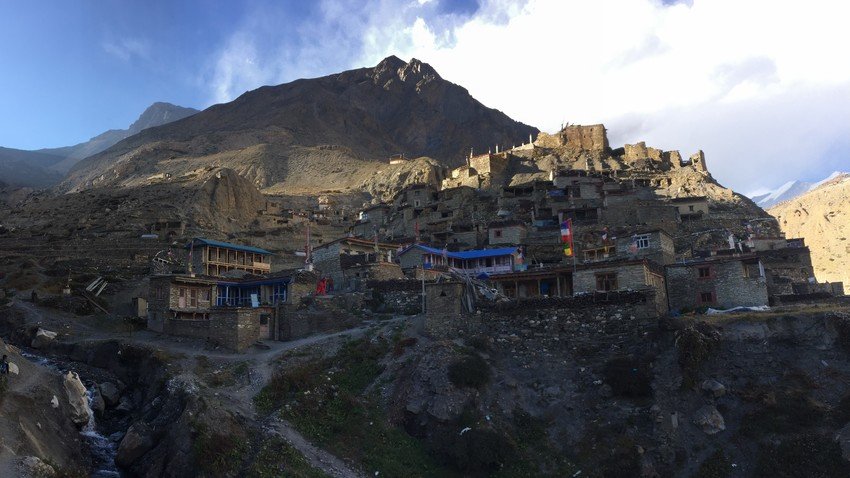 Photo: Phu Village in Manang
Photo: Phu Village in Manang
Key Information:-
Equipment List for Nar Phu Trekking
The packing lists do vary depending upon the season that you wish to travel on, and you might have to make adjustments respective to the weather conditions. Nevertheless, here is the list of things that you need to have in your checklist-
• Sun hat and winter hat
• Headlight with extra batteries
• Sunscreen and sunglasses
• Face/body wipes and Toiletries (Toilet paper, Toothbrush, soaps)
• Gloves
• Jacket (Fleece, Down jacket, Waterproof)
• Cotton t-shirts and sweaters
• Cotton pants and waterproof pants
• Hiking Boots
• Backpack or Day pack (Depends on porter hired or not)
• Thermal Bottle, Water Purification
• Trekking Pole, Binoculars and Camera
• Sleeping Bag
• Essentials (Cell phone, Watch, Money, Extra copies of Passport)
• Sleeping bag (-15 degree bag is best in the high altitude trekking
• First aid kit
Meals and Accommodation
Since you are traveling with a trekking guide, you need not worry about arranging the meals; the tea houses are already chosen for lodging by the travel agencies and the guides will be assisting you and shall make sure you face no inconveniences. Similarly, the accommodations will also be arranged in advance in the tea houses and you will not need to carry camps with you.
Altitude Sickness
To adapt to the high altitude, you must acclimatize above 3,500 meters. Most of the trekking routes are scheduled in a way that builds your ability to acclimatize safely. However, it is still suggested for you to go through medical screening and avoid treks if you have any breathing issues or are under any type of medication.
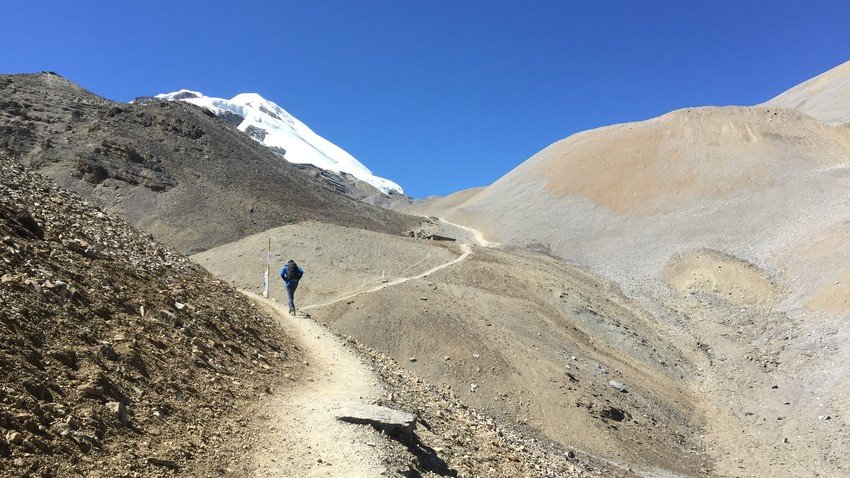 Photo: The world's highest Thorong La Pass
Photo: The world's highest Thorong La Pass
Weather
The geographical setting that the valley lays in falls on the rain shadow part, with less rainfall received. The high altitude that the valley lies in, and the drylands, makes the weather windy with dry air that flows across the valley, causing you to have dry nostrils and difficulty in breathing. The temperature is likely to drop up to less than zero degrees during the winter because of heavy snowfalls, which can make it difficult to travel sometimes.
Guided Trek to Nar Phu
This area mandates foreigners to have a trekking guide because of area restriction policies in the Nar Phu valley. Also, the trail is less traveled and the difficulty is comparatively higher. The trek cannot possibly be covered without a guide. To get your permits, you need a registered guide with you, or else the permits won’t be provided. Taking a guide will help you with the language barrier and provide you with immediate medical assistance as they are first aid trained as well. Having guides also prevents you from possible theft or any security issues that might occur.
Conclusion
The trek is a lifetime experience for you to have, not just the sense of adventure but also a live experience of ancient human communities living in high settlements of the world that you might have seen in the movies. The films might have shown a particular aspect of their lifestyles but encountering them for real will be a whole new learning process. Similarly, we suggest you create a minimal impact that is likely to affect the biodiversity of the place. Artificial wastages cannot decompose and might disrespect the serene environment of the place.
Back To Overview
